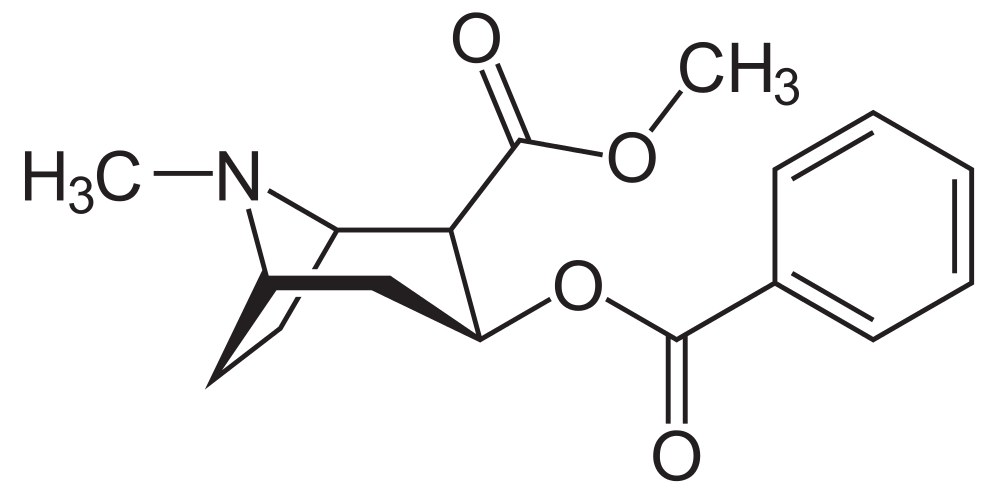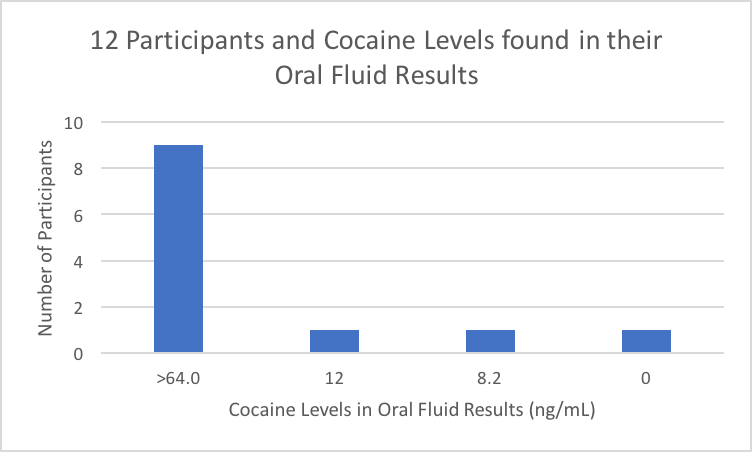Cocaine is the second most illicit trafficked drug around the world, with a global production of 866 metric tonnes in 2016, and is currently on the rise in many regions of Europe. For current techniques to determine this illegal substance in a person’s system, specialists must conduct blood or urine testing procedures that require laboratory resources and long wait periods. However, in 2017 researchers at the University of Surrey proposed a method of taking fingerprint tests that can trace cocaine in the system within a matter of minutes.

Fig. 1: Cocaine in Powder Form Drawn into lines Source: Pixabay
Dr. Catia Costa, Dr. Melanie Bailey and their team took fingerprints from patients seeking rehabilitation. Fingerprints were analyzed using chromatography paper, a paper spray mass spectrometry technique, looking at concentrations of cocaine, benzoylegonine (BZE) and methylegonine (EME). Both substances are excreted from the fingertips when the body metabolizes the drug.
Cocaine is a highly addictive substance, derived from the South American coca plant, that inhibits the reuptake of serotonin, norepinephrine and dopamine. This results in higher concentrations of these neurotransmitters in the brain providing the user with increase levels of euphoria, energy and elevated mood. The drug is so potent that the metabolites can stay in the system for 2-4 days.

Fig. 2: Chemical Structure of Cocaine Source: Wikimedia Commons
The paper is first prepared by applying a internal standard, spray solvent and then a voltage. After the fingerprint have been pressed, silver nitrate fingerprint development solution is added and exposed to ultraviolet light that will enhance black ridge fingerprint marks on the paper. Oral fluid results of cocaine had a detection limit of 1ng/mL. They found that 98.7% of the results gave a true positive while 2.5% gave a false positive with a single fingerprint.

Fig. 4: 12 Participants in the rehabilitation centre and the Amount of Cocaine found in their Oral Fluid Results
The oral fluid results were then compared with fingerprint analysis and the researchers found every finger except one gave positive results for one substance.

Fig. 5: 12 Participants (same from Fig. 4) and at least one substance (Cocaine, BZE, EME) detected on fingerprints
Law enforcement, prisons, courts, and drug rehabilitation centres can utilize this technique for a faster and more effective process of collecting drug. It takes 4 minutes per sample but research continues to look for faster techniques that can possibly take only a matter of seconds to develop in the near future.
– Tiffany Liew
References
Becue, A.; Moret, S.; Champod, C.; Margot, P. Use of stains to detect fingermarks. Biotech Histochem. 2011, 86, 140-160.
Costa, C.; Webb, R.; Palitsin, V.; Ismail, M.; dePuit M.; Atkinson, S.; Bailey M.J. Rapid, Secure Drug Testing Using Fingerprint Development and Paper Spray Mass Spectrometry. Clin. Chem. 2017, 11, 1745-1752.
Kuwayama, K.; Miyaguchi, H.; Yamamuro, T.; Tsujikawa, K.; Kanamori, T.; Iwata, Y.T.; Inoue, Hiroyuki. Effectiveness of saliva and fingerprints as alternative specimens to urine and blood in forensic drug testing. Drug Test. Analysis. 2016, 8, 644-651.
Mejia, D.; Posada, C.E. Cocaine Production and Trafficking: What Do We Know? World Bank Group. [Online] 2008, 4618 https://openknowledge.worldbank.org/handle/10986/6719 (accessed Mar 5, 2018).
Shen, L.; Zhang, J.; Yang, Q.; Manicke, N.E.; Ouyang, Z. High throughput paper spray mass spectrometry analysis. Clin. Chim. Acta. 2013, 420, 28-33.
